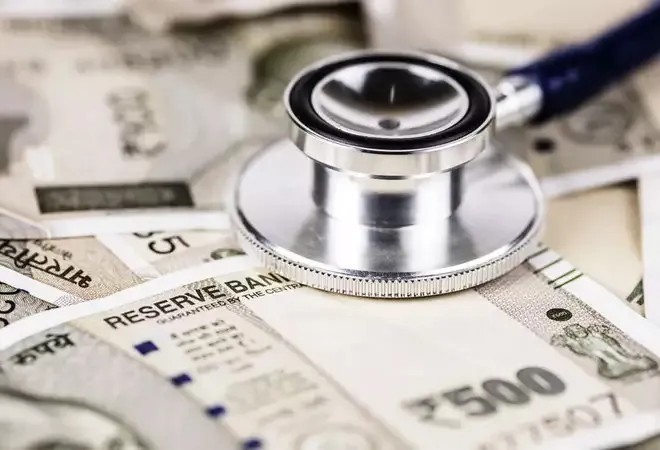
“I saved my life, and I saved my business.” This
comment by an American having received a much more affordable and life-saving surgery in India reflects a common sentiment of people struggling to afford medical treatment. For people who are faced with the difficult choice between bankruptcy and death, medical tourism has been the answer.
Medical tourism is an industry where people travel to other countries to get medical, dental, and surgical care, while also enjoying local attractions. For comparison, a
$150,000 open-heart surgery in the United States can be done for $3,000 to $10,000 in India’s best hospitals. India is quickly becoming the premier destination for foreigners seeking the same quality treatments at a much cheaper price.
India is quickly becoming the premier destination for foreigners seeking the same quality treatments at a much cheaper price.
Early on, the motivation was based in receiving affordable services; patients could save up to 50% of medical costs. However, in recent years, the decision factors have become more diverse. Patients choose nations with competitive pricing, quality medical treatments, ease of communication, and low living costs. India is increasingly favoured over other countries for its strong pharmaceutical market, cheap flights and living and quality healthcare. The health and wellness tourism also has grown in popularity; India especially has drawn interest for alternative medicine and Ayurveda centres.
India has profited significantly from this industry. Medical tourism is a key growth sector for India, as it is
projected to be worth $9 billion by 2020 and become 20% of the global market share in 2020. As a result, the government of India has encouraged the growth of the medical tourism industry and corporate hospitals through public policy. The
National Health Policy of 2002 actively promoted the growth of medical tourism, while the
Ministry of Tourism advertises these holistic healthcare services in support of industry expansion. The
medical visa process has also been simplified to allow multiple entries and long-term stay. The introduction of medical e-visas has made the process even easier. In order to gain credibility and avert suspicions associated with quality of care, top hospitals have been certified by international accreditation schemes that enhance visibility and attract more patients.
The consequences for the public sector
As much as the government has been active in pushing policies and support for this profitable industry, there has been a growing divide between the public and private sectors of healthcare. The gains from this industry have been largely confined to the private sector, where the revenue has been directed towards more expensive technologies and services for foreign patients and those within India who can afford the cost of treatment and hospitalisation. There is a sharp
contrast between the facilities geared towards medical tourists in private hospitals and those in the public hospitals that cater to the average, mostly rural, patients in India. While medical tourism has advertised state of the art cosmetic surgeries and qualified professionals, it has also caused a
shortage of healthcare workers and essential supplies in hospitals in rural areas.
While medical tourism has advertised state of the art cosmetic surgeries and qualified professionals, it has also caused a shortage of healthcare workers and essential supplies in hospitals in rural areas.
Private hospitals argue that promoting growth in medical tourism will help overall economic growth over time. However, without direct allocation of revenues to improving public health systems, this impact will be extremely slow, if not negligible. Likewise, private hospitals reserving a few beds for the poor offers marginal benefit when there is huge migration from rural areas to access quality care.
Another potential consequence of the growth in the medical tourism industry is the
diversion of health care professionals to lucrative private jobs. As this industry grows, so does the appeal to health workers who are drawn to higher salaries and greater career opportunities. Professionals are lured to jobs in urban corporate and private hospitals, leading to an acute shortage of qualified doctors in the public sector and rural areas with the most need.
Channeling the gains of medical tourism
As of 2018,
1.15% of India’s public GDP expenditures are directed to healthcare, which compared to other nations, is among the lowest in the world. This deficiency in financing explains why many patients turn to private sector healthcare if they can afford it. It also reveals why India’s healthcare targets of reducing infant and maternal mortality rates and eradicating tuberculosis are so difficult to achieve. Rural regions depend heavily on government facilities and are most impacted by the lack of critical supplies and professionals. Because of this neglect of the public sector, the government has faced increasing
pressure to divert the industry revenues towards improving public health systems.
An effective distribution mechanism would channel the gains from medical tourism towards the public sector healthcare.
To overcome these challenges, there should be greater government expenditure on healthcare and public health infrastructure which should be allocated efficiently. An effective distribution mechanism would channel the gains from medical tourism towards the public sector healthcare. Medical tourism, an industry which is currently
subsidised, should be taxed more adequately to improve the availability and quality of healthcare in public hospitals. In response to the movement of health workers to the private sector, the public sector must direct efforts towards employee retention by improving working conditions and incentivising practice in rural areas. Furthermore, the
current national accreditation system for public and private sector hospitals must be streamlined to ensure compliance. Stricter adherence to the National Accreditation Board for Hospitals and Healthcare Providers standards should
improve quality of care across both sectors.
Directing extra revenue from corporate hospitals towards the public health system is not an impossible feat. Many other nations, such as Cuba, have
profited from medical tourism without it being at the expense of local residents. Local residents receive more affordable, if not free healthcare, while foreigners are charged more. The funds are also directed towards improvement and expansion of medical facilities. India, in recognition of this very profitable opportunity, has actively encouraged the growth of medical tourism. Meanwhile, allocation to healthcare within India is still not enough. The government has in fact
prioritised programmes that have been beneficial to public health. However, as the private sector flourishes, India must not forget the continued and growing needs of the public sector. The success of medical tourism should not be at the expense of the people of India, especially when there is an opportunity to channel industry’s gains towards their health and wellbeing. Only when the government puts forth investment and effort towards improving public sector healthcare can their proclaimed goals of universal healthcare and elimination of disease become a reality. As India becomes a top medical tourism destination, the government has the responsibility to prioritise quality and affordable healthcare, not just for medical tourists, but for all.
Jessie Huang is a research intern at ORF Mumbai.
The views expressed above belong to the author(s). ORF research and analyses now available on Telegram! Click here to access our curated content — blogs, longforms and interviews.



 “I saved my life, and I saved my business.” This
“I saved my life, and I saved my business.” This  PREV
PREV


